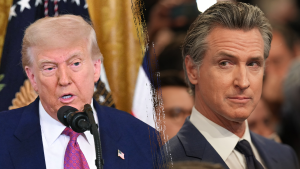A Tumultuous Year Ahead: Mayor Eric Adams Faces a Crucible in 2025
New York City Mayor Eric Adams finds himself at a critical juncture as 2025 approaches, a year that will undoubtedly define his political future and possibly his personal freedom. His once-bright star, proclaiming himself the "future of the Democratic Party," has dimmed considerably, weighed down by a combination of political challenges, legal battles, and a city grappling with complex crises. The road ahead is fraught with obstacles, demanding decisive action and strategic maneuvering if Adams hopes to salvage his mayoral term and perhaps his legacy.
Foremost among the challenges facing Adams is the looming federal corruption trial. Indicted on charges related to bribery and illegal campaign contributions, Adams has pleaded not guilty and vowed to fight the charges while remaining in office. However, the April trial casts a long shadow over his administration, distracting from his agenda and potentially undermining public trust. The outcome of this trial will undeniably shape the trajectory of his career, either vindicating him and allowing him to focus on governing or potentially ending his tenure in disgrace.
Concurrent with the legal battle is the increasingly competitive political landscape. Adams faces a potentially crowded Democratic primary field, with several prominent left-leaning figures already expressing interest in the mayoralty. Comptroller Brad Lander, former Comptroller Scott Stringer, and state senators Jessica Ramos and Zellnor Myrie represent a progressive challenge to Adams’ more centrist approach. Further complicating the race is the potential return of former Governor Andrew Cuomo, a fellow centrist who resigned amidst a sexual misconduct scandal but is reportedly eyeing a political comeback. Cuomo’s entry into the race would undoubtedly reshape the dynamics of the primary, pitting two seasoned politicians with significant name recognition against each other.
Compounding Adams’ political and legal woes are a series of interconnected crises gripping New York City. The influx of migrants has strained city resources, leading to escalating costs and logistical challenges. While efforts to manage the situation have yielded some results, the sheer scale of the crisis continues to pose a significant hurdle for Adams. Simultaneously, the city’s pre-existing homeless crisis has been exacerbated by the migrant influx, pushing the number of individuals in shelters to record levels. Addressing these intertwined crises requires substantial resources, creative solutions, and effective collaboration with state and federal partners.
Beyond the immediate crises, Adams faces ongoing tensions with the City Council. Differences in political ideology and priorities have led to frequent clashes, hindering the city’s ability to address critical issues effectively. The ongoing legal battle regarding solitary confinement in city jails further exemplifies the strained relationship between the mayor and the council. Navigating these political conflicts requires a delicate balance of firmness and compromise, a skill Adams will need to hone to achieve meaningful progress on his agenda.
The complex interplay of local and national politics adds another layer of complexity to Adams’ situation. The return of Donald Trump to the presidency could potentially benefit Adams, particularly regarding the migrant crisis. Trump’s stricter immigration policies could alleviate some of the pressure on New York City’s resources. However, aligning with Trump also carries political risks, potentially alienating segments of the Democratic base. Similarly, Governor Kathy Hochul’s stance on Adams’ situation is crucial. While she has refrained from removing him from office, she has also applied pressure behind the scenes, urging him to address ethical concerns within his administration. Maintaining a productive relationship with Hochul, while simultaneously navigating the complexities of a Trump presidency, will require astute political maneuvering.
Finally, the internal challenges facing the NYPD further complicate Adams’ ability to effectively address public safety concerns. Recent scandals involving high-ranking officials have eroded public trust in the police department. Restoring confidence in the NYPD requires swift action to address misconduct, promote accountability, and reaffirm the department’s commitment to serving the community. Concurrently, the ongoing crisis at Rikers Island demands urgent attention. The mandated plan to close the troubled jail complex remains behind schedule, posing a significant challenge for Adams’ administration.
In summary, 2025 presents a formidable set of challenges for Mayor Eric Adams. Navigating these challenges requires a multifaceted approach, encompassing legal defense, political strategy, crisis management, and interpersonal diplomacy. The decisions he makes in the coming year will determine not only the fate of his mayoral term but also the future trajectory of New York City. Whether he can successfully overcome these obstacles and fulfill his promise as a transformative leader remains to be seen. The confluence of these challenges creates a perfect storm that will test Adams’ leadership skills, political acumen, and personal resilience.










